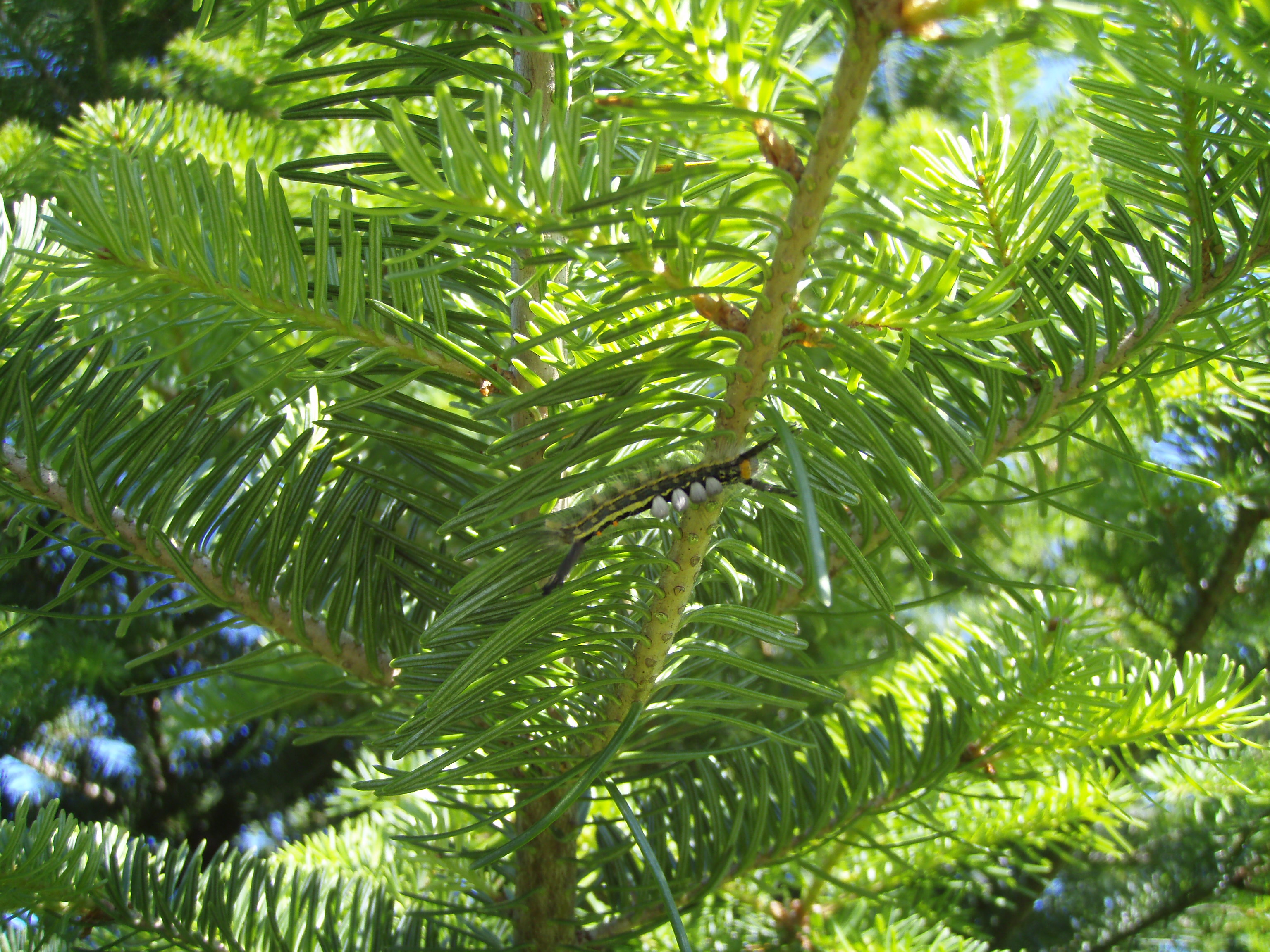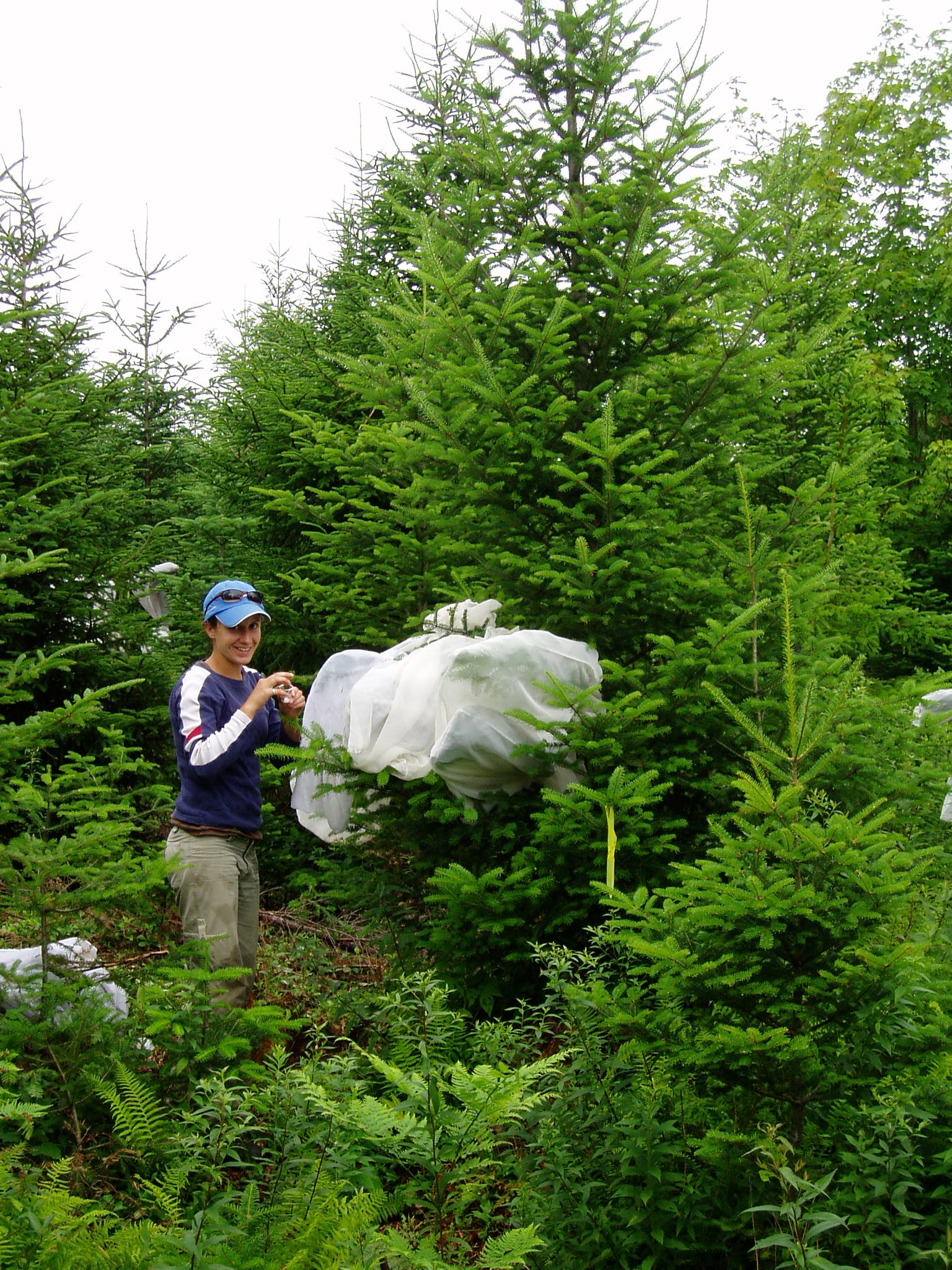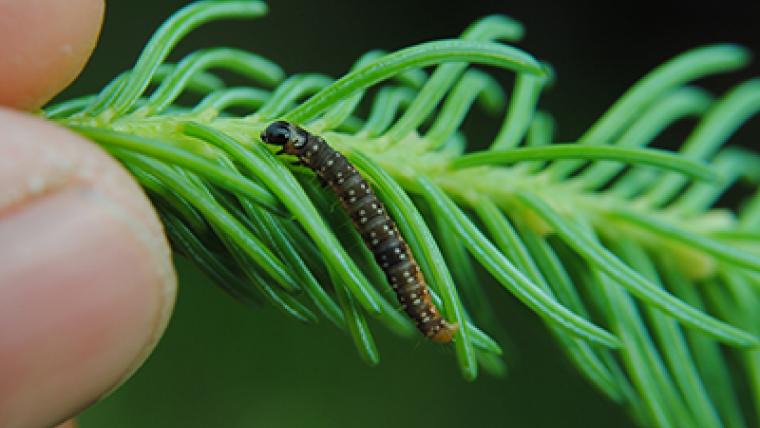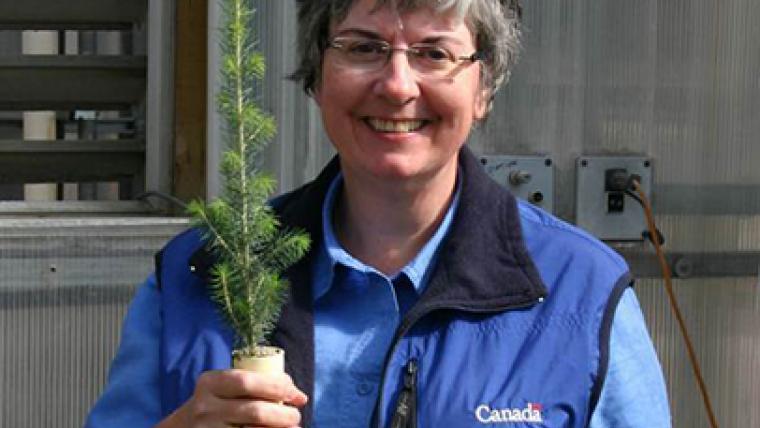Christmas tree science
By Joe McKendy
December 13, 2017
When it comes to Christmas trees, the Grinch can have wings, antennae and several pairs of legs or eyes.
Forest insect pests make it hard to grow the perfect tree. Defoliators like the whitemarked tussock moth and spruce budworm devour needles, making the trees look scraggly. The shootboring sawfly kills branch tips, leaving gaping holes among the branches. Aphids suck fluids from needles, leaving the needles twisted and discoloured.

Larger image
A whitemarked tussock moth caterpillar on a Christmas tree shoot
Insect ≠ pest
Most forest insects are nearly undetectable. Rob Johns, a forest ecologist with Natural Resources Canada, defines pest as “essentially any creature that harms something we care about.” Rob advises growers on how to monitor pests efficiently and how to decide whether they need to be controlled.
Christmas trees never get old
Christmas trees are usually harvested at 8 to 12 years, when they are about five or six feet tall. These young trees grow in full sunlight. So they develop a thicker cuticle, a waxy coating on needles that helps them hold moisture. This makes for fuller needles and protection from certain pests.

Larger image
A shootboring sawfly adult inserting an egg into a balsam fir shoot
Alien movies inspired by insects
Each growing season brings its own challenges, as weather and natural predators interact, with different effects on each species of tree. Insects that that produce the most offspring quickly have a better chance of survival, with a big impact on the pest population. A good example is parasitoids, predatory insects that often inject their eggs into the body of caterpillars. Their offspring feed within the body of the caterpillar. Once development is complete, they burst out of the caterpillar, usually killing it. If that seems familiar, it’s because it inspired the Alien movies.
Nurturing nature
Throughout the year, growers are constantly thinning, pruning and monitoring their stands for pests. They compare notes with each other at growers’ association meetings. Rob gets plenty of anecdotal information from these associations and has an interest in formalizing the process of gathering their intelligence. The more data they provide, the easier it is for scientists to identify patterns that may be helpful in refining protocols for monitoring or control.

Larger image
Leah Flaherty, Rob Johns' colleague, setting up an experiment in an old Christmas tree plantation
Sandwich-bag science
When growers notice a pest they cannot identify, they contact scientists like Rob. He has them describe what they see and when they saw it. If that’s not enough for him to go on, he asks growers to send him a photo or to freeze a sample and send it to him in a sandwich bag or a jar. Occasionally, scientists and growers use traps to gather insect samples. Pruning trees can help to remove some pest damage; however, when pest populations become too high it often becomes necessary to apply pesticides.
Book learning and boot learning
Rob works closely with growers and has great respect for them: “I can read lots of books and papers on an insect, but it’s not the same as spending decades in the same forests. These guys are legitimate naturalists in their own right.”
So the next time you are wrestling a Christmas tree onto the top of your car, think some Christmas wishes for the growers, Rob Johns and other scientists.
Fun facts about Christmas trees
What’s the best terrain for the trees? Former agricultural land. Land that is too wet means slow growth.
Which species is easiest to grow? Balsam fir. It regenerates itself. New trees grow from old roots or even branches that touch the ground.
How can I make my tree last longer? Make a fresh cut at the base and get it into the water right away. Straw-like xylum tubes carry water from base to needle. Without a fresh cut, sap clogs them up, speeding up dehydration. Keep the tree out of direct sunlight too.
How long does a tree last indoors? 4–6 weeks.
Why should I always wear a toque when carrying a tree? Former NHL player Dave Manson was once sidelined by an inner ear injury from a Christmas tree needle. Play it safe.
Page details
- Date modified:


